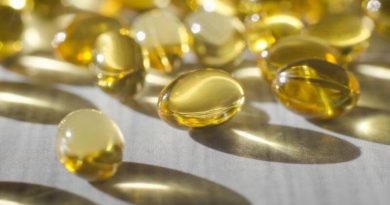Psychedelic drug triggers growth of new brain cells in mice
Research in mice has found that N,N-dimethyltryptamine (DMT), one of the active ingredients of the psychedelic tea ayahuasca, can spark the creation of new nerve cells and improve spatial learning and performance in memory tasks.

The scientists behind the new study speculate that the drug could serve to treat neurodegenerative disorders, such as Alzheimer’s disease and Parkinson’s disease.
Neurodegenerative diseases involve the progressive loss of nerve cells in affected parts of the brain or, in some cases, in other locations of the nervous system. One way to reverse the damage might be to restore the capacity to produce new nerve cells, which is known as neurogenesis.
The generation of most nerve cells in the human body takes place before birth. However, some studies suggest that the creation of new neurons is possible in adulthood, though other researchers have disputed the findings.
Ayahuasca, a tea that shamans in several South American countries use for ritual and healing purposes, is emerging as a surprising potential source of drugs that could stimulate neurogenesis.
Preliminary studies have shown that the psychedelic brew has antidepressant properties. Its newly reported potential ability to promote the growth of new nerves in the brain may partly explain these effects.
Ayahuasca is made from the leaves of Psychotria viridis, a shrub that contains DMT, and the stem of Banisteriopsis caapi, a vine that contains chemicals called beta-carbolines. These chemicals prevent the breakdown of DMT in the gut.
Researchers at the Instituto de Investigaciones Biomédicas and the Network Center for Biomedical Research in Neurodegenerative Diseases, both in Madrid, recently led a study that found that the beta-carbolines in ayahuasca stimulate neurogenesis in mouse cell cultures.
They have now discovered that DMT also stimulates neurogenesis in mice. In addition, it improves their performance in tests of spatial learning and memory.
Brain plasticity
Together, the findings suggest that DMT increases “plasticity,” which is the ability of the brain to rewire in order to learn new things.
“This capacity to modulate brain plasticity suggests that it has great therapeutic potential for a wide range of psychiatric and neurological disorders, including neurodegenerative diseases,” says José Ángel Morales, who led the research.
“The challenge is to activate our dormant capacity to form neurons and thus replace the neurons that die as a result of the disease,” Morales adds. “This study shows that DMT is capable of activating neural stem cells and forming new neurons.”
Stem cells are precursor cells that can turn into a variety of different specialized cells, as the body requires.
In cell cultures, DMT stimulated stem cells to differentiate into three types of cells from the nervous system: neurons, astrocytes, and oligodendrocytes. In a potential treatment, all three cells would be necessary to rebuild circuitry in the brain.
The study appears in the journal Translational Psychiatry.
Encoding memories
The researchers showed that in adult mice, DMT activates neurogenesis in the hippocampus, which is the part of the brain that consolidates new memories.
DMT binds to various receptors on nerve cells in the brain, including serotonin receptors. The drug is known to cause its psychedelic effects when it binds to one called the serotonin 5-HT2A receptor.
To discover which receptor is responsible for DMT’s effects on neurogenesis, the scientists injected mice with DMT, either alone or in combination with several different agents that block specific receptors.
This process revealed that DMT only triggers neurogenesis when it binds to a receptor called sigma-1, rather than the serotonin 5-HT2A receptor.
This is good news for drug developers because it means that it is possible to block DMT’s hallucinogenic effects while retaining the drug’s ability to boost neurogenesis.
In a second round of experiments, the researchers gave mice daily injections of DMT for 21 days, either alone or in combination with the agent that blocks the sigma-1 receptor. They then tested the animals’ abilities on spatial learning and memory tasks.
The animals that received DMT alone performed better than those that the team injected with DMT plus the receptor blocker. This finding suggests that the brain is putting the newly created brain cells to use in the hippocampus for learning.
Cause for optimism
Much more research is necessary to test whether DMT can increase neurogenesis in humans and whether it can reverse or slow the progression of neurodegenerative diseases.
However, the possible antidepressant effects of ayahuasca give cause for optimism. Scientists have speculated that many antidepressants work by boosting neurogenesis, which may explain why it can take up to a month for their effects to become apparent.
The authors note that, as with DMT, the antidepressant fluvoxamine binds to the sigma-1 receptor. Therefore, activating the same receptor might also be the key to boosting neurogenesis in diseases such as Alzheimer’s and Parkinson’s.
They write:
“[T]he stimulation of neurogenesis has already been proposed as a new therapeutic strategy for psychiatric and neurological diseases, and several studies have reported that the clinical efficacy of antidepressant drugs is frequently linked to the capacity of these drugs to induce neurogenesis.”
However, nerve cells may start to die off decades before the symptoms of neurodegenerative disorders become apparent. So it remains to be seen whether the brains of people who have received a diagnosis of one of these conditions still retain the capacity to generate new, functional brain cells.
For now, in common with other classic psychedelics, such as psilocybin and LSD, DMT is a Schedule 1 drug. This classification means that regulators consider it to have no accepted medical use and high potential for abuse.
As clinical trials increasingly add evidence to show that psychedelics are highly effective antidepressants, however, their scheduling is likely to change.
Source: Read Full Article



